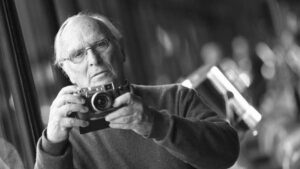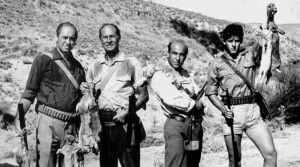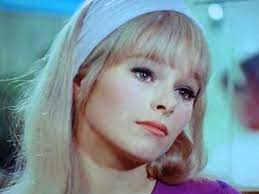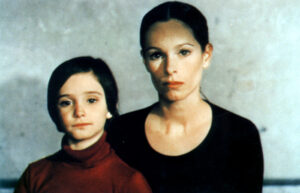Carlos Saura – Bard of Spanish Cinema

He was Spain’s most outstanding director. He is the one who made the country’s cinema famous around the world, creating films that are engaging, captivating with the beauty of Iberian culture and the accuracy of social diagnosis. Carlos Saura – the great creator of the Spanish X Muse.
Carlos Saura was born in 1932 in Huesca, Aragon. His father was a lawyer, while his mother was a pianist. From an early age, Saura was interested in photography. In 1951, he even exhibited his work in Madrid – at the Royal Photographic Society. His second love turned out to be cinema – in 1957 the filmmaker graduated from Madrid’s Institute of Cinematography. In turn, for the next six years he worked as a lecturer at the Film School, teaching a whole generation of later outstanding filmmakers of Spanish cinema. In 1964, however, as a result of political turmoil, Saura was forced to resign from teaching.
During this time, the director traveled to Paris, where he became acquainted with the cinema there, and at the Review of Spanish Cinema in Montpelier he met his great master, Luis Buñuel. In 1958 Saura made his first film, it was an ethnographic documentary about the beautiful Spanish rock-cut city of Cuenca. This work clearly referred to Bunuel’s famous “Las Hurdes” and was recognized with several prestigious awards.

“The Hunt” – an outline of Carlos Saura’s artistic credo
Saura’s first feature film was “Los golfos” (1959), whose title means in Spanish a group of hooligans. It is a depiction of a poor Madrid suburb, where crime and theft remain the only method of survival or realization of dreams. Then the director made the not very successful costume film “Weeping for a Bandit” (“Llanto por un bandido”, 1963), which was followed by the Spanish filmmaker’s first masterpiece, “The Hunt” (“La caza”, 1965). Many years later, Saura said: “all my films have their origin in The Hunt, in which I tried to describe the situation of Spain after the war using simple means.”
Indeed, one of the key issues addressed by Saura (at least until the end of General Franco’s regime) are the echoes of the Spanish Civil War of 1936 and its impact on the contemporary face of the country. “The Hunt”, as the title suggests, tells the story of a hunting expedition of several friends. The story is set in post-war Spain, but the men know each other from the days of the battle – together they were part of the anti-republican faction that eventually won. Although decades have passed since those events, rabbit hunting brings back vivid memories and activates bloodthirsty instincts. The film, which was awarded at the Berlin Festival, reads as an allegory of the situation in Francoist Spain. The work brings a metaphorical language to the director’s oeuvre, which would become Saura’s primary means of expression and his method of circumventing vigilant political censorship.
Carlos Saura’s poisonous “Peppermint Frappé” and other stories
In the same year as “The Hunt”, another great film by Saura was made “Peppermint Frappé”, marking, so to speak, a second circle of issues in the work of the Spanish director. It is about the analysis of complicated erotic relationships, in which childhood experiences play a considerable role. “Peppermint Frappé” is the story of a middle-aged man’s obsessive love for a friend’s beautiful wife. The protagonist’s insane affectation eventually leads him to commit a terrible crime. The dual female role was played by Geraldine Chaplin, Carlos Saura’s life partner at the time and his film muse.

Typical features of Saura’s cinema poetics also come to the fore in this film, i.e. a keen observation of Spanish reality, where customs are a special synthesis of Catholicism and strict upbringing with the influence of mass culture. The careful composition of the frame (picturesque shots of beautiful nature and architecture) and evocative music also play an extremely important role. These features can also be found in his subsequent films – “Stress Is Three” (“Stress-es-tres-tres”,1968) and “Honeycomb”(1969), which tell of the dramas of married life.
The indicated hallmarks of Saura’s work can also be seen in his subsequent works. In addition, they are characterized by grotesque humor and a focus on the upper class, similar to Buñuel, to whom his younger pupil clearly refers. “The Garden of Delights” (“El Cardin de las delicias”,1970) opens the famous series of films alluding to the Spanish Civil War.
Carlos Saura and the portrait of a woman
The next links of this trend in Saura’s work are also a comprehensive analysis of the situation of women in Spain. The director is a master of female portraits, most often it is the female protagonist who is at the center of events. This is the case in outstanding works such as “Anna and the Wolves” (“Ana y los Lobos”, 1973) and the Cannes award-winning “Cousin Angelica” (“La prima Angelica”, 1974) and “Cria cuervos”, 1976). The first of the aforementioned films tells the dramatic story of a young English governess (played by Geraldine Chaplin) who arrives at a wealthy Spanish home to raise little girls. On the spot, she becomes the object of interest of three brothers – the “lords of the house” and gets involved in a very dangerous game.

Both this film and the following ones expose the low position of women in patriarchal society. They also expose the hypocrisy of the cultural norm, in that the symbolic glorification of femininity, in reality hides a dismissive attitude towards women. The continuation of this series is the comedy “Mama Turns 100” (Mama cumple cie nanos, 1979), which, like the earlier links, won many prestigious film awards. It perfectly sums up the family theme in Saura’s filmography, for the family in this director’s work is an allegory of Spain, and its disintegration signifies a serious crisis of social relations.
Saura’s new works
In 1975, General Franco died, which had a decisive impact on the political transition in Spain. From then on, censorship restrictions ceased to determine the themes and poetics of domestic cinema. Carlos Saura then began to focus in his works on the fate of the individual human being and his existential dramas, especially the need to face death. This is the dimension of the films “Elisa, Vida Mia” (1977) or “Blindfolded Eyes” (1978), which introduce the theme of terrorism.
Saura began the 1980s with a completely new theme and style for his film pictures. For the main theme of his works became Spanish music and dance, reflecting the peculiar exoticism of this culture for the rest of the world. He therefore created a ballet trilogy: “Blood Wedding” (1981), “Carmen” (1983) and “El amor brujo” (1986), featuring his favorite pair of dancers, Cristina Hojos and Antonio Gades. The musical theme also became the main motif of Flamenco (1995), the famous “Tango” (1998) or “Fados” (2007). Also noteworthy are works dedicated to Saura’s great masters, namely painter Francisco Goya (“Goya in Bordeaux”, 1999) and Buñuel (“Buñuel y la mesa del rey Salomon”).
Carlos Saura died on February 10, 2023. To this day, he is considered the most outstanding Spanish director.
Literature:
E. Królikowska, „Śladami Bunuela. Kino hiszpańskie”, Warszawa 1988.
